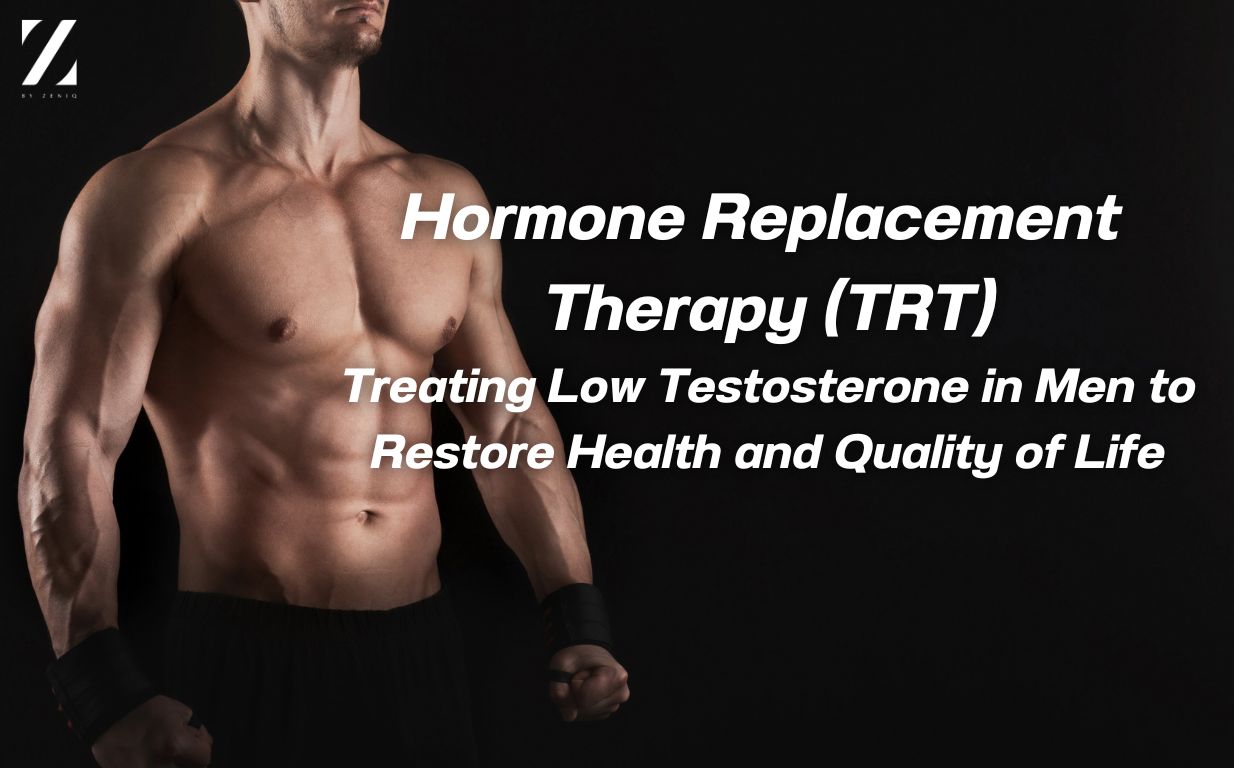Testosterone Replacement Therapy (TRT) is an alternative method to increase testosterone levels in men. This hormone may decline with age or due to other factors that impact health and quality of life.
What is Testosterone Replacement Therapy (TRT)?
Testosterone Replacement Therapy (TRT) involves supplementing testosterone in men with low levels of this hormone, a condition known as hypogonadism. This condition often affects older men or those with certain health problems that disrupt testosterone production. Symptoms of low testosterone may include decreased energy, reduced sexual performance, and loss of muscle mass. TRT can help address these symptoms effectively.
Causes of Low Testosterone Levels
Several factors contribute to declining testosterone levels in men, including:
- Aging: Testosterone production naturally decreases with age, which is a leading cause of low levels.
- Chronic illnesses: Diseases like diabetes, heart disease, and obesity can impair testosterone production.
- Neurological issues: Brain injuries or pituitary gland dysfunction can disrupt hormone production.
- Psychological and environmental factors: Stress, sleep deprivation, and an unhealthy lifestyle (e.g., poor diet) can also lower testosterone levels.
Benefits of Testosterone Replacement Therapy (TRT)
TRT can alleviate many symptoms associated with low testosterone, including:
- Increased energy: Men with low testosterone often feel fatigued and lack vitality. TRT can boost energy and promote alertness.
- Improved sexual performance: TRT can enhance libido and help address erectile dysfunction.
- Increased muscle mass and strength: Testosterone plays a crucial role in building muscle and bone mass, and TRT can help restore these.
- Relief from depression and anxiety: Raising testosterone levels can improve mood and reduce feelings of sadness and anxiety.
Methods and Forms of TRT
TRT is available in various forms to suit patient preferences and convenience, including:
- Injections: Direct testosterone injections are a common method, typically administered every 1-2 weeks.
- Gels or creams: Applied to the skin, these are absorbed effectively to raise hormone levels.
- Patches: These slowly release testosterone into the bloodstream when placed on the skin.
- Oral medication: For those who prefer not to use other methods, oral testosterone is also an option.
Pros and Cons of TRT
Pros:
- Increased energy and libido
- Enhanced muscle mass and physical strength
- Improved mental health and mood
Cons:
- Potential risks of heart disease or prostate cancer
- Fluid retention in the body
- Suppression of the body’s natural testosterone production when therapy is discontinued without medical guidance
Is TRT Right for You?
TRT may not be suitable for everyone, especially men with a history of prostate cancer or heart-related issues. Consulting with a specialist and undergoing comprehensive health assessments are crucial steps to determine eligibility and ensure safe and effective treatment.
Monitoring and Adjusting Therapy
Continuous monitoring is essential for patients on TRT. Regular blood tests help assess hormone levels and the body’s response to treatment. Adjustments to the therapy may be necessary to manage symptoms and minimize side effects.
Conclusion
Testosterone Replacement Therapy (TRT) is an effective way to restore testosterone levels and improve symptoms related to low testosterone, such as fatigue, reduced libido, and loss of muscle mass. However, it comes with potential risks. A thorough evaluation and regular follow-up with a healthcare provider are critical to achieving optimal and safe outcomes. Now available at Z by Zeniq.

